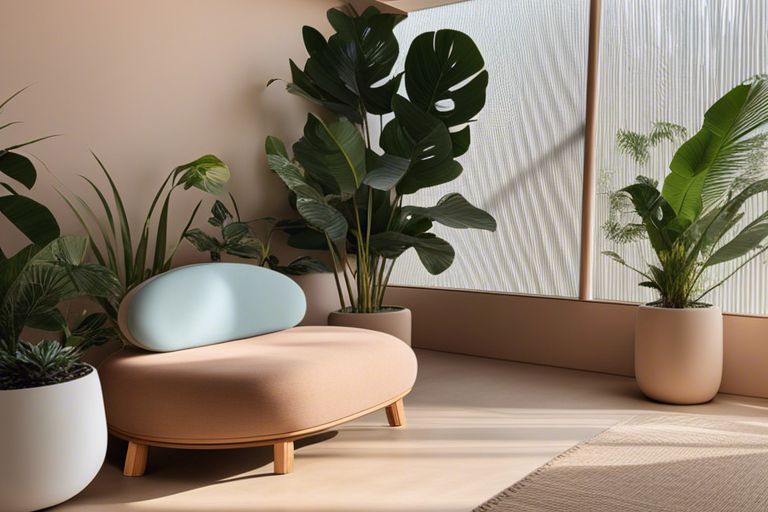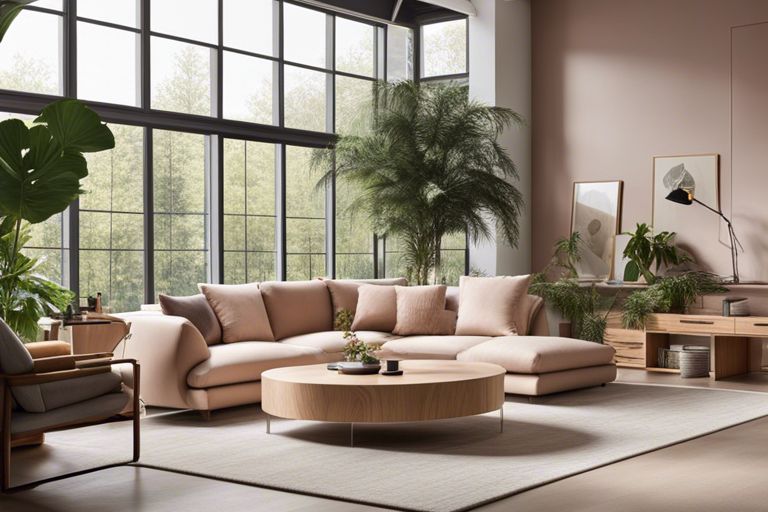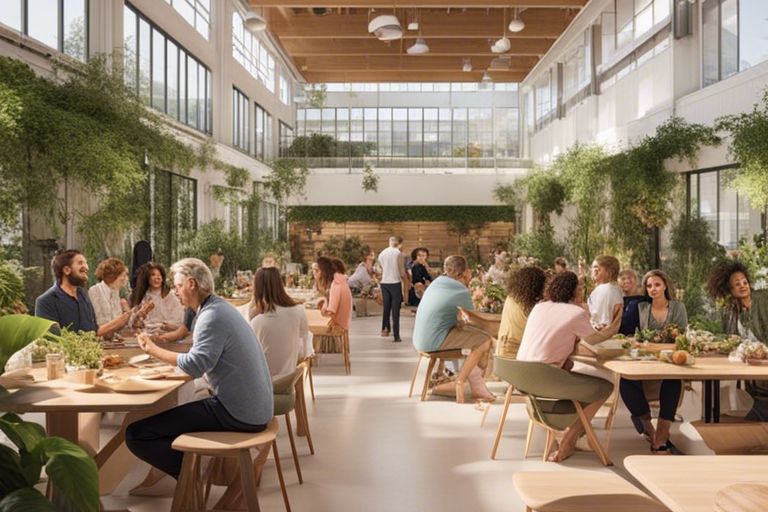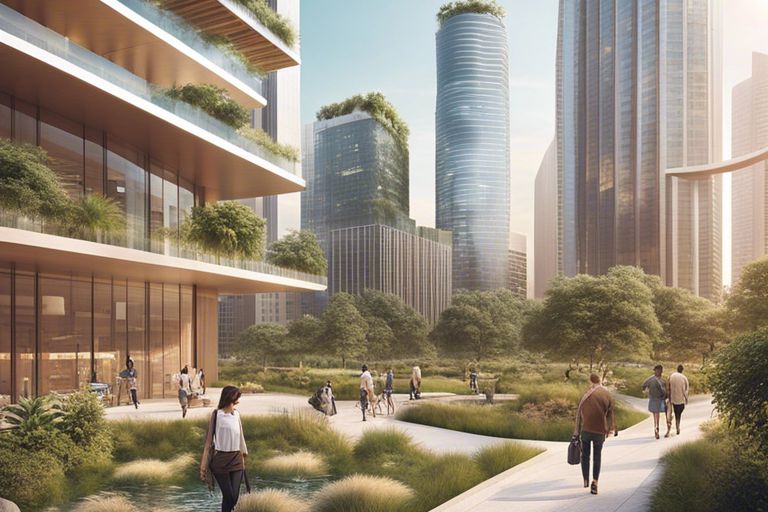Retreat to your own oasis of calm by designing a meditation area in biophilic spaces. Find inspiration in nature’s harmony as you create a serene sanctuary for reflection and inner peace. Let greenery and natural elements soothe your soul, while design choices enhance tranquility.
Key Takeaways:
- Blend nature with design: Incorporating natural elements like plants, natural light, water features, and wood textures can create a calming atmosphere for meditation.
- Create a tranquil atmosphere: Use soft colors, comfortable seating, and minimalistic decor to promote relaxation and a sense of peacefulness in the meditation area.
- Focus on mindfulness and connection: Design the space with intent, incorporating elements that encourage mindfulness, self-reflection, and a deeper connection with nature and oneself during meditation sessions.
Embracing Biophilia
Defining Biophilic Design
Biophilic design focuses on connecting individuals to nature within the built environment, promoting health and well-being. It integrates natural elements, such as greenery, natural light, and water features, to create spaces that evoke a sense of calm and tranquility. By incorporating biophilic design principles into your meditation space, you can enhance the overall experience and promote a deeper connection to nature.
The Importance of Nature in Meditation
On your journey to creating a relaxing retreat, incorporating nature into your meditation area is crucial. Surrounding yourself with elements such as plants, natural materials, and views of the outdoors can have a profound impact on your mental clarity and overall well-being. Nature has a way of soothing the mind and rejuvenating the spirit, making it an crucial component of a truly serene meditation space.
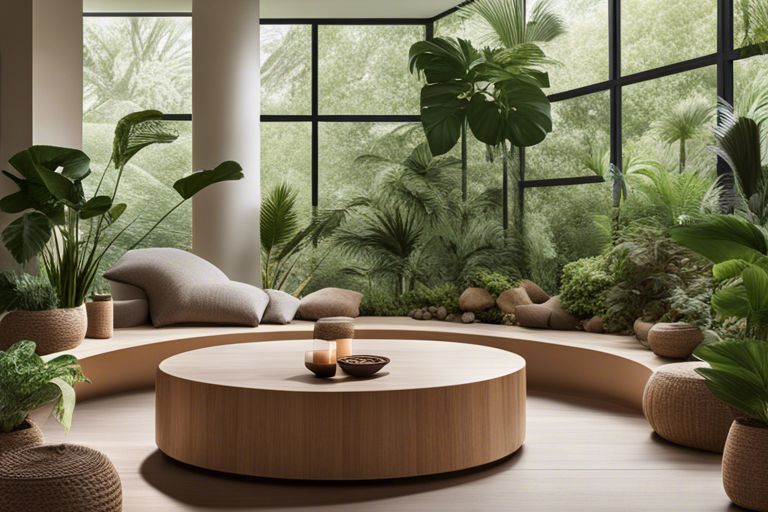
Creating a Calming Atmosphere
The atmosphere of a meditation space plays a crucial role in promoting a sense of tranquility and relaxation. When designing your meditation area, consider elements that contribute to a peaceful ambiance, such as color schemes, soothing textures, materials, and lighting choices.
Color Schemes for Serenity
Atmosphere is greatly influenced by color, so opt for hues that evoke a sense of calmness and serenity. Soft, muted tones like pale blues, greens, and earthy neutrals can help create a peaceful environment for your meditation practice. These colors are known to have a soothing effect on the mind and body, promoting a sense of relaxation and inner peace.
Soothing Textures and Materials
On the physical level, the choice of textures and materials in your meditation space can also contribute to a calming atmosphere. Incorporate soft fabrics like plush cushions, cozy rugs, and natural materials such as wood and stone to create a sense of comfort and grounding. These tactile elements can enhance the overall feeling of relaxation and create a warm, inviting space for contemplation and self-reflection.
With the careful selection of textures and materials, you can create a sensory-rich environment that engages your tactile senses and promotes a deeper sense of relaxation during meditation.
Lighting for Relaxation
An important aspect of creating a calming atmosphere in your meditation area is the lighting. Soft, diffused lighting helps to set the mood and create a tranquil ambiance. Consider incorporating adjustable lighting options like dimmer switches or candles to customize the light levels according to your preference and create a soothing environment for your practice.
For instance, you can place a salt lamp or a small fountain in your meditation space to add a soft, warm glow and create a peaceful atmosphere. Experiment with different lighting sources to find what works best for you and enhances your meditation experience.
Designing the Meditation Space
For a comprehensive guide on creating a harmonious biophilic meditation space, check out Your Guide To The Art Of Biophilic Interior Design. This resource will provide you with valuable insights on incorporating nature-inspired elements into your meditation area to enhance tranquility and connection with the natural world.
Layout Considerations for Flow
Layout plays a crucial role in the functionality of your meditation space. Ensure that the arrangement of furniture and natural elements promotes a sense of harmony and flow. Create an open and inviting space that allows you to move freely and facilitates a seamless transition into a meditative state.
Incorporating Natural Elements
An imperative aspect of designing a meditation space in a biophilic environment is the incorporation of natural elements. Integrate plant life, natural textures, and earthy tones to evoke a sense of calm and grounding. Consider incorporating elements such as stones, wood, or water features to enhance the serenity of the space.
The presence of natural elements in your meditation area not only creates a visually appealing environment but also nurtures a deeper connection with nature. Surrounding yourself with these elements can evoke a sense of peace and tranquility, helping you to achieve a state of mindfulness and relaxation.
Minimizing Distractions
With careful consideration of the design and layout, you can effectively minimize distractions in your meditation space. Choose soothing colors, declutter the area, and limit the presence of electronic devices to create a calm and focused environment for your practice.
Incorporating soft lighting, natural scents, and soundproofing elements can further enhance the tranquility of the space and eliminate potential disruptions during your meditation sessions.
Bringing the Outdoors In
Incorporating Plants and Greenery
To bring the calming presence of nature into your meditation area, consider incorporating plants and greenery. With their natural ability to purify the air and create a sense of tranquility, plants can enhance the biophilic essence of your space. Choose varieties such as peace lilies, snake plants, or aloe vera that are known for their air-purifying qualities and low maintenance. Integrating plants into your meditation area can help you connect with nature and foster a peaceful environment for your practice.
Using Natural Materials and Patterns
On your quest to infuse nature into your meditation space, consider using natural materials and patterns. Incorporate elements such as wooden furniture, bamboo mats, or stone accents to create a harmonious and grounded atmosphere. It is important to choose textures and patterns that imitate the natural world, such as earth tones, leafy motifs, or flowing water patterns. These natural elements can evoke a sense of serenity and balance, enhancing your meditation experience.
Maximizing Natural Light
The presence of natural light can significantly impact the ambiance of your meditation area. Position your space near a window or skylight to plus the amount of natural light that filters in. Maximizing natural light not only creates a warm and inviting atmosphere but also helps regulate your circadian rhythm and enhance your overall well-being. Ensure your curtains or blinds are easily adjustable to control the amount of light entering your space during different times of the day.
Acoustics for Inner Peace
Many elements contribute to creating a calming meditation space, and one crucial aspect is acoustics. Sound plays a significant role in enhancing or disrupting your inner peace. Controlling the acoustics in your meditation area can greatly impact the quality of your practice and help you achieve a deeper state of relaxation.
Soundproofing for Silence
To maximize your meditation experience, consider implementing soundproofing solutions in your space. This can involve using sound-absorbing materials like carpets, curtains, or acoustic panels to reduce external noise distractions. Ensuring silence in your environment can enhance your ability to focus inward and tune out the external world, aiding in your journey to tranquility.
Calming Soundscapes and Music
Soundproofing your meditation space is only one part of creating a sonic environment conducive to relaxation. Selecting calming soundscapes or gentle music can aid in your journey to stillness. The right audio accompaniment can help you focus your mind and deepen your meditation practice.
Plus, incorporating nature sounds like rustling leaves, babbling brooks, or birdsong can bring a sense of outdoor serenity into your indoor space, helping you connect with nature and find inner peace.
The Role of Silence in Meditation
Soundscapes that include periods of silence are also crucial for deepening your meditation practice. Silence allows you to focus inward, listen to your breath, and be fully present in the moment. Embracing silence in your meditation area can open the door to a profound sense of peace.
Comfort and Ergonomics
Once again, as you investigate creating your tranquil meditation area, comfort and ergonomics should be at the top of your mind. The design of your meditation space should promote relaxation and ease to help you fully immerse yourself in your practice. Selecting the right seating options, supportive cushions, and encouraging good posture are key elements to consider for a soothing and comfortable meditation retreat within your biophilic space.
Seating Options for Meditation
With a variety of seating options available, it’s necessary to choose one that fits your body type and comfort preferences. Whether you opt for a traditional meditation cushion, a cozy meditation chair, or a soft yoga mat, the key is to select a seat that allows you to sit comfortably for an extended period. Your seating choice should support your posture and provide a stable base for your meditation practice.
Supportive Cushions and Props
An necessary component of your meditation area is investing in supportive cushions and props to enhance your comfort and alignment during practice. Supportive cushions and props can help elevate your hips, support your spine, and relieve pressure on your knees and ankles, allowing you to sit for extended periods without discomfort. Look for ergonomic cushions specifically designed for meditation to ensure optimal support and relaxation while you meditate in your biophilic space.
Comfort is paramount when it comes to creating a serene meditation area. Supporting your body with the right cushions and props can make a significant difference in the quality of your meditation sessions, helping you stay focused and comfortable throughout your practice.
Encouraging Good Posture
Cushions and props play a crucial role in encouraging good posture during meditation. Proper posture not only helps prevent discomfort and injury but also allows for better alignment of the spine, promoting a deeper sense of relaxation and mindfulness. By incorporating cushions strategically to support your hips, back, and knees, you can achieve a comfortable and sustainable meditation posture that enhances your overall well-being.
Plus, maintaining good posture during meditation can improve circulation, breathing, and focus, helping you fully immerse yourself in the present moment and reap the benefits of your practice.
Conclusion
Summing up, creating a peaceful retreat for meditation in biophilic spaces can greatly enhance your overall well-being and connection to nature. By incorporating elements such as natural light, plants, and calming colors, you can design a space that encourages relaxation and mindfulness. Remember to keep the design simple, decluttered, and focused on nature to create a soothing environment for your meditation practice.
Taking inspiration from nature and incorporating biophilic design principles can help you create a tranquil oasis in your home or workspace. Whether you have a dedicated meditation room or a small corner, by infusing your space with elements of nature and simplicity, you can cultivate a sense of peace and serenity that will enhance your meditation practice and overall sense of well-being. So, embrace the beauty of biophilic design and create your own relaxing retreat for meditation today.
FAQ
Q: What is a biophilic space?
A: A biophilic space is an environment that incorporates elements of nature to create a rejuvenating and calming atmosphere. It includes natural light, greenery, natural materials, and views of nature.
Q: Why is it important to design a meditation area in a biophilic space?
A: Designing a meditation area in a biophilic space enhances the experience of mindfulness and relaxation. The presence of nature elements helps to reduce stress, improve focus, and promote a sense of well-being during meditation practice.
Q: How can I design a meditation area in a biophilic space?
A: To create a relaxing retreat in a biophilic space, consider incorporating elements such as plants, natural materials like wood and stone, soft lighting, nature sounds, and a comfortable seating area. Keep the space clutter-free and prioritize natural elements to foster a sense of tranquility and connection to nature.
